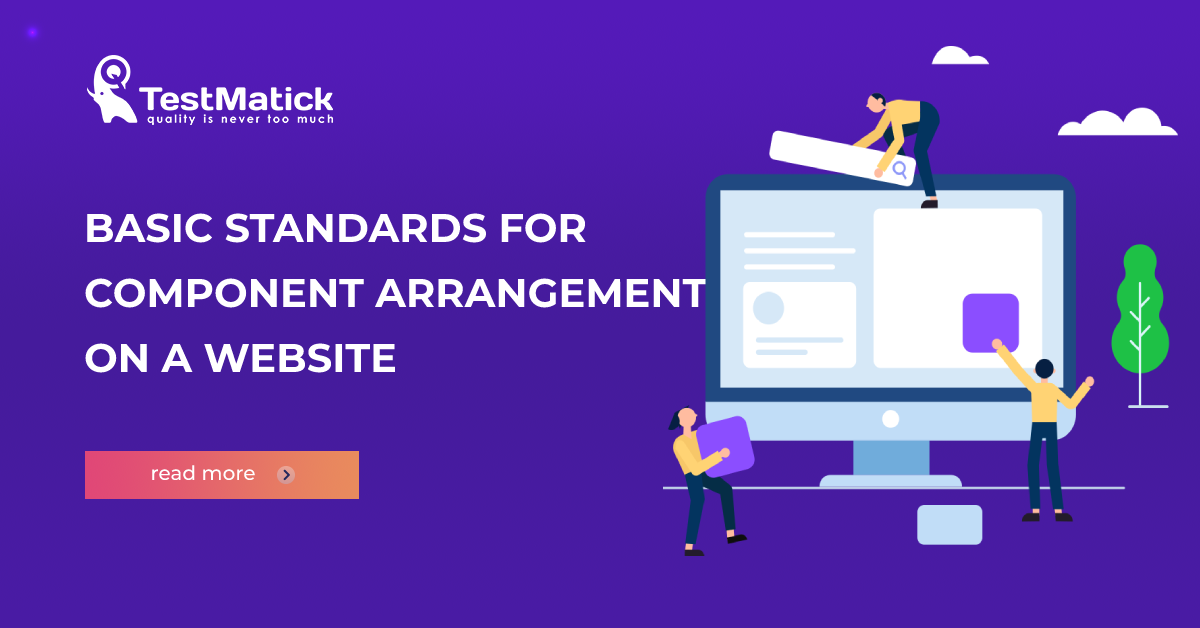A visual display (current location of objects in a particular system) is one of the main aspects of the successful development and promotion of any website. The correct arrangement of various elements makes a site user-friendly on one hand and the most effective for owners on the other. In the contrary case, the conversion decreases and the product becomes less popular, profitable, and relevant.
Some people think that the main task of the right web arrangement is the responsibility of designers exclusively who create sites providing the correct layout of elements within web pages. But the basics of positioning are important for all members of the software development team – from developers and testers to managers who offer customers first-class QA services.
Further in the article, we will analyze in detail the basic structure of the correct arrangement of web elements, and nuances that may arise during such processes.
Types of Web Information
Any web page has a particular data set with a specific value. All the available data can be divided into 4 types:
- Information;
- Guidance;
- Purchasable;
- Communicative.
The information data serve as an accurate and understandable explanation of the purpose and specificity of the site. Such web objects give an accurate idea of what exactly can be found on a particular site. They present data on its field-specific focus and the type of services provided, etc.
A user read this type of information in the first place and their further actions depend exclusively on it (type). This type of data includes all kinds of banners, menus, slogans, etc.
Guidance information is the easiest and fastest way to navigate the website. Its basic task is to lead the user to the desired point in the minimum number of clicks (an interesting article, ordering goods, paying for services, etc.).
Usually, the guiding information includes menu blocks, semantic banners, pop-up windows, and a block of “bread crumbs”.
Selling data is a basic element of content on web portals, especially when it comes to commercial resources. This type of information helps the user to successfully complete certain actions that best satisfy his/her internal needs.
This is a fairly encompassing type of data that can easily include components of other types of information. Sales data contains a variety of order forms, designs of products sold, etc.
The communicative type of information is important not only at the stage of meeting a new user but also at the stage of performing a key action (ordering goods, paying for services, searching for the required information). Elements of this category encourage the user to search for additional information, clarify incomprehensible facts, and also share the information found with other users.
Fundamental Requirements to Basic Web Elements
Main elements of a website must fully complete tasks of every type of providing information. Among such elements, we can distinguish the following ones: website header, titles, navigation block, menu, conversion form, and footer.
The header is a block of a website that contains all the most important functional elements. It is some kind of a tool to shortly inform users about the website’s specificity. It provides a quick navigation on website sections. Usually, the header includes a website logo, name, navigation menu, a search field, contact, or registration form.
The title may contain a short statement in the form of a slogan, question, or quotation. It describes the website specificity, serves as a thing that attracts user attention. It is something like a trigger for future actions.
The navigation block is quite a powerful tool to effectively direct a user to places of his/her potential interests and aims. Elements inside the menu should be grouped correctly. Since the wrong arrangement can cause the situation when users are misinformed. And hence they will lose interest in this web portal.
The conversion form is a way for a user to take targeted action on website pages. These can be forms for purchasing goods, calling the hotline, subscribing to a newsflash, or sending applications.
The footer, just like the header or navigation block, plays a vital role in any website’s functioning. As a rule, there is a group of elements that didn’t fit the header but still are an important communication tool for users. For example, contact numbers, email addresses, links to social networks, etc.
To Sum Up
There are a lot of informational elements and objects for a website. And of course, each of them should be used exclusively on the basis of recommendations and norms. Nevertheless, basic rules and the template concepts should always remain unchanged and fundamental for most of these objects.
That is why applying the basic knowledge of elements arrangement on a website in practice, you can not only create and test an effective web resource but also set your trends in the design and promotion of portals.










Leave A Comment